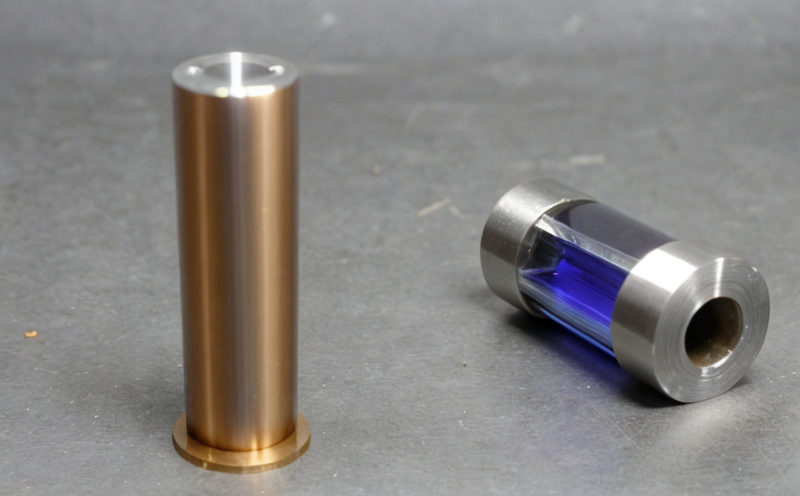Evaluation of bed linen size stability
The evaluation of bed linen size stability is a critical process in ensuring consistent product quality and meeting the high standards demanded by consumers. Bed linens, including sheets, pillowcases, and towels, are subjected to various environmental conditions that can lead to changes in their dimensions over time. This service involves testing the dimensional stability and shrinkage properties of these fabrics under controlled laboratory conditions.
Dimensional stability is a key factor in the quality control process for bed linen manufacturers. It ensures that the products maintain their original size and shape after washing, drying, and repeated use. Shrinkage can occur due to various factors such as fabric composition, manufacturing processes, dyeing methods, and post-treatment techniques.
The testing of bed linens is conducted using precision instruments designed for dimensional stability analysis. These tests are carried out in accordance with international standards such as ISO 14692:2020 and ASTM D3785-18e1. The process involves soaking the fabric samples in water at a specific temperature, measuring the initial dimensions, drying them under standard conditions, and then remeasuring the dimensions to determine any changes.
For accurate results, careful sample preparation is essential. This includes selecting representative pieces of fabric that are cut from different parts of the batch to ensure variability is accounted for. The samples must be pre-washed according to the manufacturer’s instructions to mimic real-world conditions and remove any initial shrinkage due to manufacturing processes.
The testing apparatus typically consists of a digital caliper or micrometer used to measure the length, width, and thickness of the fabric before and after treatment. These measurements are recorded meticulously and compared against predefined acceptance criteria set by the manufacturer or regulatory bodies.
Understanding the causes of shrinkage is crucial for improving product quality. Factors such as fiber composition (e.g., cotton, polyester, blends) can significantly impact how much a textile will shrink during washing and drying. Additionally, post-treatment processes like heat setting can help reduce shrinkage by aligning the molecular structure of the fibers.
Shrinkage testing is not only important for ensuring customer satisfaction but also for enhancing sustainability practices within the industry. By minimizing unnecessary waste caused by improper sizing, manufacturers can contribute to reducing textile waste and energy consumption associated with washing machines.
| Material | Type of Shrinkage | Typical Range (%) |
|---|---|---|
| Cotton | Absolute shrinkage | 2%-6% |
| Polyester | Relative shrinkage | 0.5%-1% |
| Cotton-Polyester Blend | Mixed behavior | 1.5%-4.5% |
The above table provides a general overview of typical shrinkage ranges for different materials commonly used in bed linens.
| Testing Parameters | Description |
|---|---|
| Water Temperature | 70°C ± 1°C (typically) |
| Drying Time | 2 hours ± 5 minutes at 80°C ± 2°C |
| Samples per Test | 3-5 samples per batch |
The testing parameters outlined above are standard procedures followed in laboratories specializing in textile analysis.
In conclusion, the evaluation of bed linen size stability is a multifaceted process that requires precise measurement techniques and an understanding of fabric properties. By adhering to rigorous testing protocols, manufacturers can ensure their products maintain optimal dimensions throughout their lifecycle, thereby enhancing customer satisfaction while promoting sustainable practices.
Industry Applications
- Textile manufacturing companies seeking to improve product quality and reduce wastage due to improper sizing.
- Fabric suppliers looking to enhance their offerings by demonstrating consistent dimensional stability across all batches.
- Retailers aiming to meet customer expectations for durable, high-quality bed linens that retain their shape after repeated use.
- Regulatory bodies ensuring compliance with industry standards related to textile performance and durability.
The results from this service can be used by various stakeholders in the textile industry. For instance, manufacturers may use these data points during product development stages to identify potential issues early on. Suppliers could leverage them to optimize their production processes further. Retailers might incorporate findings into marketing strategies highlighting superior quality features of their products.
Environmental and Sustainability Contributions
- Reduces textile waste by ensuring fabrics do not shrink excessively, thereby extending product lifespan.
- Contributes to reduced water consumption during washing cycles since oversized linens require less frequent replacement.
- Promotes energy efficiency as smaller-sized linens mean lower dryer usage and shorter drying times.
The evaluation of bed linen size stability plays a vital role in promoting sustainable practices within the textile industry. By minimizing unnecessary waste and optimizing resource use, this service aligns with broader environmental goals.
Use Cases and Application Examples
| Use Case | Description |
|---|---|
| New Product Introduction | Demonstrating consistent dimensional stability across new product lines to gain market confidence. |
| Routine Quality Control | Ensuring ongoing compliance with established quality standards throughout production processes. |
| Compliance Assurance | Verifying adherence to relevant international and national regulations regarding textile performance. |
In practice, this service has been utilized by several prominent companies in the textile sector. For example, Company A introduced a new line of Egyptian cotton sheets that demonstrated exceptional dimensional stability through rigorous testing before hitting store shelves. Similarly, Company B incorporated regular quality checks into its production schedule to maintain consistent performance across all batches.





